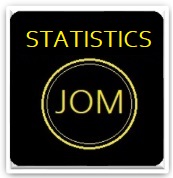Plagiarism
All articles will undergo plagiarism checks by using Turnitin Software. The similarities must not exceed 25% based on Ministry of Technology Research / National Research of Indonesia standard regarding publication as mentioned below:
Ministry of Technology Research / National Research of Indonesia accepts a plagiarism percentage tolerance of up to 25%, but this largely depends on the context of the percentage similarity of each source. This percentage of similarity does not include direct quotations and References. If the percentage of similarities to one large and sequential source in one sentence or paragraph, this is also unacceptable, although the total percentage is still below 15%.
Plagiarism is an act:
- refer to and/or quote phrases and/or sentences of an uncommon nature without mentioning the source of the work itself or others in the quotation notes and/or without stating the source in accordance with the reference and/or quotation in the scientific writing; using sources of ideas, opinions, views, data, and/or theories without stating the source of one's own work or others in accordance with the reference and/or citation in scientific writing;
- formulate by one's own sentences from the source of sentences, data, or theories without stating the source of the work itself or others in accordance with the reference and/or citation of scientific writing;
- translating writings from a source of one's own work or others in whole or in part that is recognized as its scientific work; and/or recognize a work produced by another party as his scientific work.
Reproducing text from other papers without properly crediting the source (plagiarism) or producing many papers with almost the same content by the same authors (self-plagiarism) is not acceptable. Submitting the same results to more than one journal concurrently is unethical. Exceptions are the review articles. Authors may not present results obtained by others as if they were their own. Authors should acknowledge the work of others used in their research and cite publications that have influenced the direction and course of their study.
Based on the Editorial Guide for The Management of Scientific Journals of the Directorate of Intellectual Property Management, Deputy for Strengthening Research and Development of the Ministry of Technology Research / National Research and Innovation Agency 2020, there are several types of plagiarism:
- Direct Plagiarism.
Direct plagiarism is copying every word from someone else's work without mentioning the source, or without including quotation marks. Deliberate plagiarism of the work of others is unethical, and academically dishonest.
- Self Plagiarism.
Self plagiarism occurs if the author uses previously published material, or takes a portion of the material that has been published before without the knowledge of the other authors.
- Mosaic Plagiarism.
Mosaic plagiarism occurs if a person uses a phrase from another source without listing 'quotation marks', or uses synonyms but the sentence structure and meaning are still the same as the original.
- Accidental Plagiarism.
Accidental plagiarism occurs if the author forgets to list the source of the reference, or misstated the source, or accidentally rewrote a few words, sentences without mentioning the source. Although this type of plagiarism occurs accidentally, this kind of plagiarism is also treated the same as other plagiarism and is a scientific violation.



